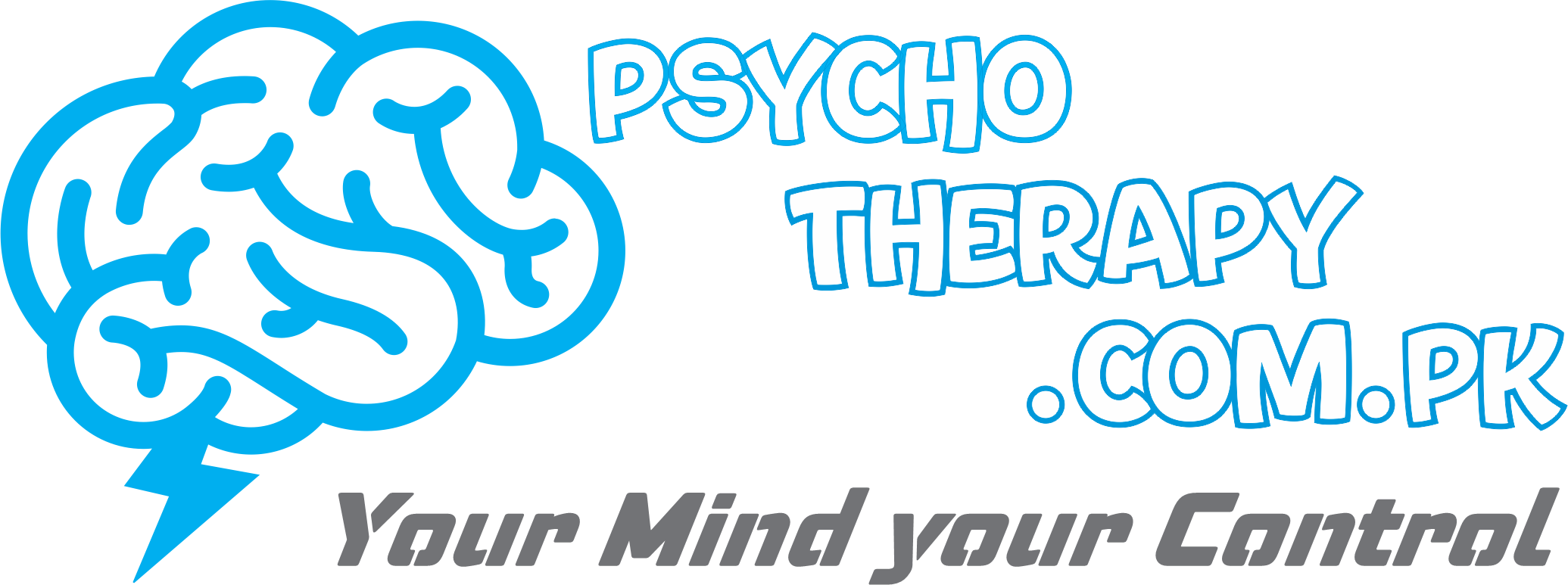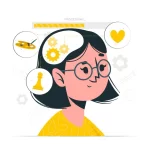Definition of Cognitive Behavioral Therapy
CBT, or Cognitive Behavioral Therapy, is a widely practiced form of psychotherapy that focuses on identifying and changing negative thought patterns and behaviors. It is based on the premise that our thoughts, feelings, and behaviors are interconnected, and by changing our thought patterns and behaviors, we can positively influence our emotions and overall well-being.
Key components of CBT include:
Cognitive Restructuring: This involves identifying and challenging distorted or negative thought patterns and beliefs, and replacing them with more realistic and balanced thoughts.
Behavioral Techniques: These techniques involve modifying behaviors and actions that contribute to distress or mental health issues. This may include exposure therapy, relaxation techniques, or activity scheduling.
Problem-Solving: CBT helps individuals develop effective problem-solving skills to cope with and manage life challenges.
Goal-Oriented Approach: CBT is typically structured and goal-oriented, with a focus on specific issues and setting achievable goals to work towards.
Therapeutic Relationship: A strong therapeutic relationship between the therapist and the individual is emphasized, allowing for collaboration and a safe space for open communication.
CBT is widely used to treat various mental health conditions such as anxiety disorders, depression, phobias, obsessive-compulsive disorder (OCD), post-traumatic stress disorder (PTSD), eating disorders, and more. It’s often utilized in individual or group therapy sessions, and sometimes in combination with other therapeutic approaches or medication.
Explanation of Cognitive Behavioral Therapy
Cognitive Behavioral Therapy (CBT) is a widely practiced and evidence-based form of psychotherapy that aims to help individuals identify and change negative thought patterns and behaviors that contribute to emotional distress and mental health problems. It is rooted in the understanding that our thoughts, feelings, and behaviors are interconnected, and by modifying dysfunctional thought patterns and behaviors, we can improve our emotional well-being.
Here’s a detailed explanation of CBT, breaking down its key components and the therapeutic process:
1. Understanding Thoughts, Emotions, and Behaviors:
Thoughts (Cognitions): CBT begins with the recognition that our thoughts and interpretations of events significantly influence our emotional and behavioral responses. These thoughts can be automatic and sometimes distorted, leading to negative emotions.
Emotions: Emotions are our responses to our thoughts and interpretations. CBT emphasizes understanding and managing emotions effectively.
Behaviors: Behaviors are our actions, which can be influenced by our thoughts and emotions. Maladaptive behaviors can reinforce negative thought patterns.
2. Assessment and Formulation:
Assessment: The therapist works with the individual to understand their concerns, symptoms, and the context in which these issues arise. This typically involves a thorough evaluation of the person’s thoughts, emotions, behaviors, and life experiences.
Formulation: Based on the assessment, a formulation is developed that outlines the interplay between thoughts, emotions, behaviors, and external factors contributing to the individual’s challenges. This formulation guides the treatment plan.
3. Collaborative Goal Setting:
The therapist and individual collaboratively set specific, achievable goals for therapy. These goals often target the problematic thoughts, behaviors, or emotional responses that the individual wishes to address.
4. Cognitive Restructuring:
Identifying Negative Thoughts: The individual learns to identify and become aware of negative or irrational thoughts that contribute to emotional distress or unwanted behaviors.
Challenging and Restructuring Thoughts: The therapist helps the individual question the accuracy and validity of these negative thoughts. They encourage finding evidence for and against these thoughts, promoting a more balanced and realistic perspective.
5. Behavioral Techniques:
Exposure Therapy: Particularly useful for anxiety-related disorders, exposure therapy involves gradually confronting feared situations or stimuli to reduce fear and anxiety.
Behavioral Activation: This involves scheduling and engaging in pleasurable and meaningful activities to combat depression and increase positive experiences.
Skills Training: Learning and practicing new coping skills, communication skills, anger management techniques, and problem-solving strategies to enhance adaptive behaviors.
6. Problem-Solving:
The therapist helps the individual develop effective problem-solving skills to handle life challenges and stressors constructively.
7. Homework Assignments:
Individuals are often assigned homework between sessions to practice new skills, apply techniques learned, and monitor their thoughts and behaviors.
8. Monitoring Progress:
The therapist and individual regularly review progress toward goals, making adjustments to the treatment plan as needed.
9. Termination and Relapse Prevention:
Therapy concludes with a focus on maintaining progress and preventing relapse. The individual is equipped with strategies to recognize signs of regression and manage potential setbacks effectively.
CBT is typically a time-limited and structured therapy, often ranging from a few weeks to several months, depending on the individual’s needs and goals. It emphasizes active participation, collaboration, and empowerment, enabling individuals to develop lasting skills to manage their mental health and lead more fulfilling lives.
Types of Cognitive Behavioral Therapy
Cognitive Behavioral Therapy (CBT) encompasses several types and variations, each with its own focus and specialized techniques. Here are some of the most prominent types of CBT:
1. Traditional CBT:
Traditional CBT is the foundational form of CBT and includes the basic principles and techniques of cognitive restructuring and behavioral interventions.
2. Cognitive Therapy (CT):
Cognitive Therapy primarily focuses on identifying and challenging negative thought patterns and cognitive distortions that contribute to emotional distress. It emphasizes changing thoughts to bring about emotional and behavioral changes.
3. Behavioral Therapy:
Behavioral Therapy emphasizes modifying problematic behaviors by applying learning principles. It uses techniques like reinforcement, punishment, and modeling to encourage positive behavior change.
4. Dialectical Behavior Therapy (DBT):
DBT integrates traditional CBT techniques with mindfulness strategies. It is effective for individuals with borderline personality disorder and focuses on emotional regulation, distress tolerance, mindfulness, and interpersonal effectiveness.
5. Acceptance and Commitment Therapy (ACT):
ACT aims to help individuals accept their thoughts and feelings instead of struggling against them. It encourages mindfulness, acceptance, and the pursuit of meaningful life goals.
6. Mindfulness-Based Cognitive Therapy (MBCT):
MBCT combines CBT with mindfulness practices. It’s often used to prevent relapses of depression by teaching individuals to be more aware of their thoughts and emotions.
7. Schema Therapy:
Schema Therapy is used for longstanding and deeply ingrained patterns of thinking and behavior. It focuses on identifying and challenging early maladaptive schemas (core beliefs) that developed during childhood.
8. Trauma-Focused Cognitive Behavioral Therapy (TF-CBT):
TF-CBT is designed for individuals, especially children and adolescents, who have experienced trauma. It addresses trauma-related symptoms and helps individuals process their traumatic experiences.
9. Cognitive Processing Therapy (CPT):
CPT is specifically designed for individuals with post-traumatic stress disorder (PTSD). It involves processing traumatic events by challenging and modifying unhelpful beliefs related to the trauma.
10. Rational Emotive Behavior Therapy (REBT):
REBT emphasizes identifying and challenging irrational beliefs that lead to emotional and behavioral disturbances. It focuses on teaching individuals to replace irrational beliefs with rational ones.
11. Multimodal Therapy:
Multimodal Therapy integrates various therapeutic approaches and techniques (e.g., behavioral, affective, sensory, interpersonal) based on the belief that different modalities impact an individual’s functioning.
12. Brief Cognitive Behavioral Therapy:
Brief CBT is a time-limited version of traditional CBT, often used for specific issues or when a shorter intervention is needed.
These variations in CBT provide therapists with a range of tools to tailor treatment to an individual’s specific needs and circumstances. The choice of which type of CBT to use depends on the individual’s diagnosis, preferences, and the therapist’s expertise. Often, therapists may integrate elements from different types of CBT to create a personalized and effective treatment plan.
Strategies of Cognitive Behavioral Therapy
Cognitive Behavioral Therapy (CBT) employs a variety of techniques to help individuals identify and modify dysfunctional thought patterns and behaviors. These techniques are designed to promote healthier thinking, emotional regulation, and adaptive behaviors. Here are some common techniques used in CBT:
1. Cognitive Restructuring:
Identifying Automatic Thoughts: Recognizing and recording immediate thoughts that arise in response to situations or events.
Challenge and Reframe: Encouraging individuals to challenge the accuracy and validity of their automatic thoughts. They learn to generate alternative, more balanced interpretations of the situation.
Decatastrophizing: Examining the worst-case scenario and considering more realistic and less catastrophic outcomes.
2. Behavioral Experiments:
Testing Beliefs: Encouraging individuals to test their beliefs and predictions through real-life experiments or role-playing, helping them gather evidence to challenge or support their thoughts.
3. Graded Exposure:
Systematic Desensitization: Gradually exposing individuals to feared or avoided situations or stimuli in a structured and controlled manner, reducing anxiety and fear responses.
4. Activity Scheduling:
Planning Activities: Helping individuals plan and engage in enjoyable and meaningful activities to improve their mood and increase a sense of accomplishment.
5. Mindfulness and Relaxation Techniques:
Mindfulness Meditation: Teaching individuals to focus on the present moment, observe their thoughts without judgment, and cultivate awareness.
Progressive Muscle Relaxation (PMR): Guiding individuals through a process of tensing and relaxing muscle groups to reduce physical tension and stress.
6. Journaling and Thought Records:
Thought Diaries: Encouraging individuals to record their thoughts, emotions, and behaviors to identify patterns and triggers.
ABCDE Technique (Activating Event, Belief, Consequence, Disputation, New Effect): Analyzing the situation, identifying beliefs, exploring consequences, disputing irrational thoughts, and integrating new perspectives.
7. Role-Playing:
Role Reversal: Encouraging individuals to play the roles of others to gain insight into different perspectives and challenge their own assumptions.
8. Problem-Solving Techniques:
Identifying the Problem: Breaking down a problem into manageable parts to analyze and understand it better.
Generating Solutions: Encouraging individuals to brainstorm and generate potential solutions to a problem.
Decision Analysis: Evaluating the pros and cons of each solution to make an informed decision.
9. Self-Monitoring:
Mood and Thought Tracking: Keeping a record of daily moods, thoughts, and behaviors to identify patterns and triggers.
10. Homework Assignments:
Assigning exercises, activities, or readings to be completed outside of therapy sessions to reinforce and apply CBT skills in daily life.
11. Communication Skills Training:
Teaching effective communication skills, assertiveness, and conflict resolution strategies to improve interpersonal interactions.
12. Imagery and Visualization:
Using mental imagery to help individuals confront and process fears or to visualize success and positive outcomes.
These techniques are often tailored to suit the individual’s needs, preferences, and specific goals in therapy. The combination and application of these techniques may vary based on the type of CBT being utilized and the particular mental health concerns being addressed. The aim is to equip individuals with the tools and strategies needed to manage their thoughts, emotions, and behaviors in a more constructive and adaptive manner.
Utilizations of Cognitive Behavioral Therapy
Cognitive Behavioral Therapy (CBT) is a versatile and widely used therapeutic approach that has proven effective in addressing a broad range of mental health issues and improving overall well-being. Here are some common uses of CBT:
1. Anxiety Disorders:
Generalized Anxiety Disorder (GAD): CBT helps individuals identify and challenge excessive worrying and anxiety-provoking thoughts.
Panic Disorder: CBT assists in understanding and managing panic attacks, including addressing avoidance behaviors and changing catastrophic beliefs.
Phobias (e.g., Social Phobia, Specific Phobias): CBT utilizes exposure therapy to desensitize individuals to feared situations or objects.
2. Depression:
CBT is highly effective in identifying and restructuring negative thought patterns associated with depression, promoting a more positive outlook and improved mood.
It helps individuals develop coping strategies and problem-solving skills to manage depressive symptoms.
3. Post-Traumatic Stress Disorder (PTSD):
CBT, particularly Trauma-Focused CBT (TF-CBT) and Cognitive Processing Therapy (CPT), is used to process traumatic experiences, challenge distorted beliefs about the trauma, and reduce PTSD symptoms.
4. Obsessive-Compulsive and Related Disorders:
CBT, specifically Exposure and Response Prevention (ERP), is effective in reducing obsessive thoughts and compulsive behaviors.
It focuses on exposing individuals to anxiety-provoking situations and preventing their typical compulsive responses.
5. Eating Disorders:
CBT helps individuals with anorexia, bulimia, or binge-eating disorders challenge unhealthy thoughts related to body image, eating, and weight.
It targets distorted beliefs and behaviors related to food and body image, promoting a healthier relationship with food.
6. Insomnia and Sleep Disorders:
CBT for insomnia (CBT-I) is a structured program that addresses thoughts, behaviors, and routines related to sleep, promoting better sleep patterns and improving sleep quality.
7. Substance Use Disorders:
CBT, particularly Cognitive-Behavioral Coping Skills Therapy, assists individuals in identifying triggers for substance use, developing coping strategies, and preventing relapse.
8. Attention-Deficit/Hyperactivity Disorder (ADHD):
CBT helps individuals with ADHD develop organizational skills, time management, and coping strategies to manage symptoms and improve functioning.
9. Chronic Pain and Medical Conditions:
CBT helps individuals manage chronic pain by addressing pain-related thoughts and behaviors, improving coping skills, and enhancing quality of life.
It’s also utilized for managing symptoms of various medical conditions like irritable bowel syndrome (IBS), fibromyalgia, and chronic fatigue syndrome.
10. Stress Management:
CBT equips individuals with stress-reducing techniques, relaxation strategies, and problem-solving skills to manage daily stressors effectively.
11. Anger Management:
CBT helps individuals identify triggers and develop coping mechanisms to manage and express anger in a healthier way.
12. Self-Esteem and Confidence Building:
CBT assists individuals in challenging negative self-beliefs, building self-esteem, and enhancing self-confidence.
13. Adolescent Behavioral Issues:
CBT is used to address behavioral problems, academic challenges, and emotional regulation in adolescents.
CBT is flexible and can be adapted to suit various ages and cultural backgrounds. It’s often used in individual, group, or family therapy settings and can be combined with other therapeutic approaches or medication when appropriate. Overall, CBT is a highly effective and widely utilized tool for improving mental health and enhancing the quality of life for individuals experiencing a range of psychological and emotional challenges.
Advantages of Cognitive Behavioral Therapy
Cognitive Behavioral Therapy (CBT) offers a multitude of benefits for individuals dealing with various mental health issues and challenges. These benefits extend across different age groups and can significantly improve one’s overall well-being. Here are some key advantages of CBT:
1. Effective Treatment for Diverse Conditions:
CBT has been proven effective in treating a wide range of mental health conditions, including depression, anxiety disorders, phobias, OCD, PTSD, eating disorders, substance abuse, sleep disorders, chronic pain, and more.
2. Empirical and Evidence-Based:
CBT is supported by substantial research and clinical evidence, demonstrating its effectiveness in symptom reduction, relapse prevention, and improving the quality of life for individuals across various age groups and conditions.
3. Focus on Present Issues and Solutions:
CBT emphasizes addressing current problems and finding practical solutions, rather than delving extensively into past experiences. This makes it particularly useful for individuals looking for a forward-focused approach to manage their challenges.
4. Structured and Time-Limited:
CBT is typically structured and goal-oriented, making it easier for individuals to understand the process and set achievable goals. It often involves a set number of sessions, providing a clear timeline for progress and completion.
5. Collaborative and Empowering:
CBT fosters a collaborative therapeutic relationship between the individual and therapist. Individuals actively participate in setting goals, identifying problems, and developing solutions, empowering them to take an active role in their treatment.
6. Skill-Building and Coping Strategies:
CBT equips individuals with practical skills and coping strategies to manage their thoughts, emotions, and behaviors effectively. This includes relaxation techniques, problem-solving skills, emotion regulation, and communication skills.
7. Customized and Tailored Approach:
CBT is highly adaptable and can be tailored to suit the unique needs, preferences, and circumstances of each individual. Therapists modify techniques and interventions based on the individual’s diagnosis and progress.
8. Long-Term Benefits and Relapse Prevention:
CBT provides individuals with tools and strategies that they can continue to use beyond therapy, promoting long-term mental health benefits and reducing the risk of relapse.
9. Improves Self-Awareness:
CBT helps individuals gain insight into their thought processes, beliefs, and behavioral patterns. This increased self-awareness enables them to recognize and challenge unhelpful thinking and make positive changes.
10. Enhances Quality of Life:
By effectively managing mental health symptoms, CBT can improve an individual’s overall quality of life. This includes better relationships, increased productivity, improved physical health, and a greater sense of well-being.
11. Cost-Effective:
CBT is often considered a cost-effective treatment option, especially when compared to other forms of psychotherapy or long-term medication use. Its structured nature can result in fewer therapy sessions while still achieving positive outcomes.
12. Non-Invasive and Low Risk:
CBT is a non-invasive and low-risk treatment, making it a suitable option for a wide range of individuals, including those who may not want to use medications or prefer a non-pharmacological approach.
Overall, CBT’s effectiveness, versatility, and emphasis on empowerment and skill-building make it a highly sought-after therapeutic approach for improving mental health and enhancing the lives of many individuals.
Effectiveness of Cognitive Behavioral Therapy
Cognitive Behavioral Therapy (CBT) is widely recognized as one of the most effective and evidence-based treatments for various mental health disorders and psychological challenges. The effectiveness of CBT has been extensively researched and documented across a diverse range of conditions. Here are key points highlighting its effectiveness:
1. Empirical Support:
CBT is supported by a substantial body of empirical evidence from controlled trials, studies, and meta-analyses, showcasing its effectiveness across different mental health disorders.
2. Efficiency and Time-Limited Nature:
CBT often yields positive results within a relatively short period. Many individuals experience significant improvements in symptoms and functioning within 12 to 16 weeks of structured CBT sessions.
3. Comparable or Superior to Other Treatments:
Research indicates that CBT is often as effective as, or even superior to, other forms of psychotherapy for many conditions. It’s also comparable to medication in treating various disorders, and in some cases, it may lead to more enduring effects and lower relapse rates.
4. Reduction of Symptoms:
CBT has been consistently found to reduce symptoms associated with numerous mental health disorders, including depression, anxiety disorders, PTSD, panic disorder, phobias, obsessive-compulsive disorder, eating disorders, and more.
5. Prevention of Relapses and Recurrences:
CBT not only helps in alleviating symptoms but also aids in preventing relapses or recurrences of the disorders it treats. Individuals often develop skills and strategies to manage their conditions effectively in the long term.
6. Improvement in Quality of Life:
CBT has shown to improve an individual’s overall quality of life by enhancing functioning, reducing distress, improving relationships, increasing productivity, and fostering a better sense of well-being.
7. Applicability to Different Populations:
CBT has demonstrated effectiveness across diverse populations, including children, adolescents, adults, and older adults. It’s also culturally adaptable, making it applicable across various cultural contexts.
8. Effective for Co-occurring Disorders:
CBT is effective for individuals with multiple mental health disorders (comorbidity). It can address and manage symptoms of multiple conditions simultaneously.
9. Customization and Flexibility:
CBT is highly adaptable and can be tailored to meet an individual’s specific needs, making it a versatile option for a variety of psychological issues.
10. Long-Lasting Benefits:
CBT often results in lasting benefits, with individuals continuing to utilize the skills and strategies learned in therapy long after the treatment concludes.
11. Cost-Effectiveness:
CBT is considered cost-effective compared to other forms of psychotherapy and long-term medication use due to its structured nature and potential for relatively brief treatment periods.
12. Patient Satisfaction:
Patients often report high levels of satisfaction with CBT due to its collaborative nature, practical focus, and the skills acquired, leading to a sense of empowerment and progress.
In summary, the effectiveness of CBT is supported by extensive research and clinical practice, making it a widely preferred and recommended treatment for a wide array of mental health disorders. Its structured approach, goal-oriented nature, and emphasis on skills development contribute to its success in helping individuals achieve positive outcomes and improved well-being.
Considerations of Cognitive Behavioral Therapy
When considering Cognitive Behavioral Therapy (CBT) as a treatment option, several important factors should be taken into account to ensure its suitability and effectiveness for an individual. Here are key considerations when contemplating CBT:
1. Diagnosis and Clinical Assessment:
Ensure a thorough evaluation and accurate diagnosis of the mental health condition. CBT is particularly effective for anxiety disorders, depression, phobias, PTSD, OCD, eating disorders, and various other conditions.
2. Individual Needs and Preferences:
Consider the individual’s preferences and readiness for therapy. Some may prefer a structured and skills-based approach like CBT, while others may lean towards different therapeutic styles.
3. Therapist Qualifications and Expertise:
Verify that the therapist providing CBT is qualified, licensed, experienced, and specifically trained in CBT techniques and methodologies.
4. Collaborative Approach:
Understand that CBT is a collaborative process, and active participation from the individual is crucial. Ensure the individual is willing to engage, reflect, and participate in homework assignments.
5. Realistic Expectations:
Discuss and set realistic expectations regarding the outcomes and duration of treatment. CBT typically involves a structured number of sessions over a defined period.
6. Assessment of Suicidal or Harmful Thoughts:
If the individual is experiencing severe depression, suicidal thoughts, or engaging in self-harming behaviors, it’s important to ensure immediate safety measures and potential crisis intervention alongside CBT.
7. Exploring Other Treatment Options:
Consider if CBT should be used as a standalone treatment or in combination with other therapies, medication, or lifestyle changes depending on the severity and nature of the mental health condition.
8. Medical and Psychiatric Factors:
Take into account any medical conditions, medications, or psychiatric history that could impact the effectiveness and approach of CBT.
9. Financial and Practical Considerations:
Assess the financial implications and feasibility of engaging in CBT, including insurance coverage, out-of-pocket costs, and the individual’s ability to attend regular sessions.
10. Evaluating Progress and Adjustments:
Plan for regular check-ins and assessments to monitor progress, discuss any concerns, and make adjustments to the treatment plan as needed.
11. Awareness of Cognitive Readiness:
Recognize that some individuals may initially struggle with identifying and challenging their thoughts. The therapist should adapt and guide the individual through this process.
12. Understanding Homework Commitment:
Emphasize the importance of completing homework assignments, as they reinforce skills learned during therapy and contribute to better outcomes.
13. Sensitivity to Cultural Factors:
Consider cultural and contextual factors that might influence the individual’s perception of therapy and tailor CBT accordingly to be culturally sensitive.
14. Long-Term Skill Maintenance:
Discuss plans for maintaining and utilizing CBT skills beyond the formal therapy period to ensure long-term benefits.
By carefully considering these factors, individuals and therapists can work collaboratively to determine if CBT is a suitable and effective treatment option for addressing mental health concerns and achieving positive therapeutic outcomes.
Process of Cognitive Behavioral Therapy?
Getting started with Cognitive Behavioral Therapy (CBT) involves several steps, from understanding what CBT entails to finding a suitable therapist and actively engaging in the therapeutic process. Here’s a step-by-step guide to help you begin your journey with CBT:
1. Understand CBT:
Read about CBT: Familiarize yourself with the core concepts, techniques, and principles of CBT by reading reputable books, articles, or online resources.
2. Clarify Your Goals and Needs:
Identify Concerns: Clearly articulate the specific issues or challenges you’d like to address through CBT. Be specific about your goals and what you hope to achieve.
3. Seek Professional Help:
Find a Qualified Therapist:
Ask for recommendations from your primary care physician, friends, or family.
Use reliable online directories to search for licensed therapists specializing in CBT.
Contact your insurance provider to inquire about therapists in your network.
Verify Credentials: Ensure the therapist is licensed and has specialized training in CBT. Look for relevant certifications or memberships in professional associations.
4. Initiate Contact:
Schedule Consultations: Reach out to potential therapists to schedule initial consultations. This is an opportunity to discuss your concerns, ask questions, and evaluate if you feel comfortable with the therapist.
5. Prepare for Your First Session:
Compile Relevant Information:
Write down any symptoms, triggers, or patterns of behavior you’ve noticed.
Document your medical history, any current medications, and previous mental health treatments.
Clarify Practical Details:
Confirm the location, time, and duration of the first session.
Discuss fees, insurance coverage, and payment options.
6. Attend Your First Session:
Express Your Goals and Concerns
Discuss the specific challenges you’re facing and what you hope to achieve through CBT.
Be open and honest about your experiences, thoughts, and emotions.
Ask Questions:
Inquire about the therapist’s approach to CBT, the expected duration of treatment, and how progress will be measured.
Evaluate the Therapeutic Relationship:
Assess if you feel comfortable with the therapist and if the communication style aligns with your preferences.
7. Commit to the Process:
Engage Actively: Participate wholeheartedly in the therapeutic process, complete assigned homework, and be willing to practice new skills outside of therapy sessions.
Attend Regularly: Maintain regular attendance and be punctual for all sessions as consistency is vital for progress.
8. Practice Self-Care and Homework:
Implement Techniques: Apply CBT techniques learned in sessions to your daily life, challenging and reframing negative thoughts and employing coping strategies.
Complete Homework Assignments: Diligently complete any homework or exercises given by the therapist, as they reinforce learning and promote progress.
9. Monitor Progress and Adjust:
Track Changes: Keep a journal to monitor changes in your thoughts, emotions, and behaviors over time.
Discuss Progress: Regularly communicate with your therapist about your progress and any challenges you may face, to make necessary adjustments to the treatment plan.
By following these steps, you’ll establish a solid foundation for engaging in Cognitive Behavioral Therapy and working towards your desired mental health goals. Remember that active participation, openness, and a willingness to practice new skills are key to making the most of your CBT experience.
What to expect with Cognitive Behavioral Therapy?
Starting Cognitive Behavioral Therapy (CBT) can be a beneficial and transformative experience. Here’s what you can generally expect when engaging in CBT:
1. Initial Assessment and Goal Setting:
In the first few sessions, you’ll meet with your therapist to discuss your concerns, symptoms, and history. Together, you’ll set specific, achievable goals for therapy.
2. Structured Sessions:
CBT typically follows a structured approach with each session having a specific agenda and objectives. The therapist will guide you through exercises and discussions related to your goals.
3. Education and Understanding:
The therapist will explain the fundamentals of CBT, including how thoughts, emotions, and behaviors are interconnected. Understanding the CBT model is crucial for making progress.
4. Identifying Thought Patterns:
You’ll work on identifying automatic thoughts and cognitive distortions (irrational thought patterns) that contribute to your emotional distress or problematic behaviors.
5. Challenging and Restructuring Thoughts:
Through discussions and exercises, you’ll learn to challenge and reframe negative or distorted thoughts into more balanced, realistic, and helpful ones.
6. Behavioral Experiments:
You may engage in behavioral experiments to test the validity of your beliefs and observe the outcomes of approaching situations differently.
7. Homework Assignments:
Expect to receive homework assignments, which could include tracking your thoughts, practicing coping skills, or implementing strategies discussed in sessions.
8. Skill-Building and Coping Strategies:
Your therapist will teach you various coping strategies, relaxation techniques, and problem-solving skills to manage distressing situations more effectively.
9. Exposure and Desensitization (if applicable):
If addressing fears or phobias, you may engage in exposure exercises to gradually confront and overcome anxiety-provoking situations.
Progress will be monitored and discussed regularly, allowing adjustments to the treatment plan if needed to ensure it remains effective.
10. Active Participation:
Expect to actively participate and collaborate with your therapist. You’ll be encouraged to ask questions, provide feedback, and share your experiences openly.
11. Confidentiality and Trust:
CBT sessions are confidential, providing a safe space to discuss personal matters. Building trust and a strong therapeutic alliance with your therapist is essential.
12. Number of Sessions:
The number of sessions varies based on individual needs and goals. CBT can range from a few weeks to several months, with regular assessments to evaluate progress.
13. Long-Term Benefits:
Over time, you’ll develop skills to manage your mental health more effectively, leading to lasting improvements and a better quality of life.
Remember, every CBT experience is unique to the individual, tailored to your specific goals and circumstances. The effectiveness of CBT often stems from your active engagement, practice of skills, and collaboration with your therapist to work towards achieving your desired outcomes.











